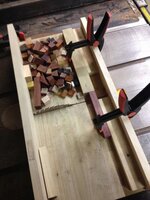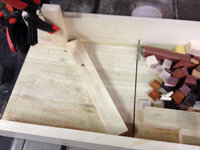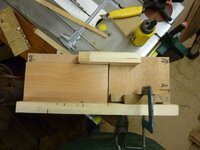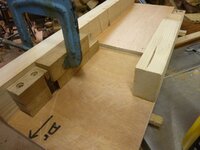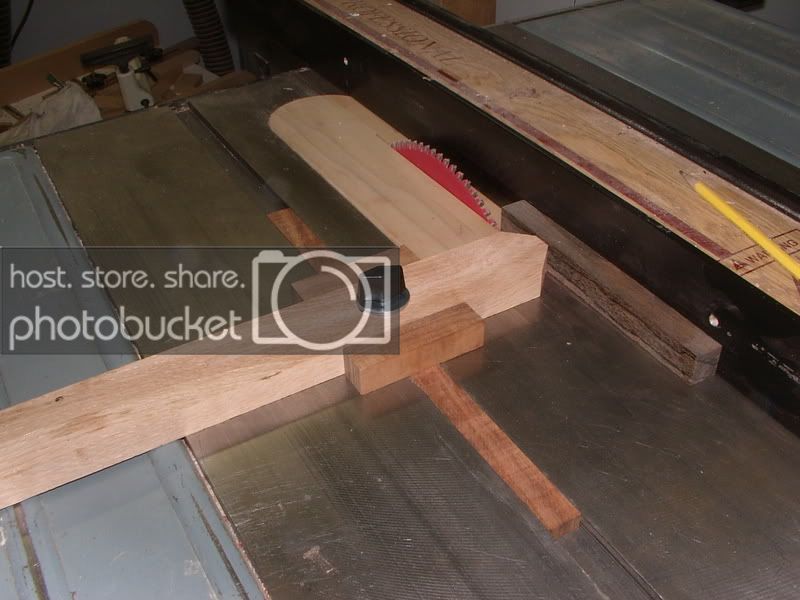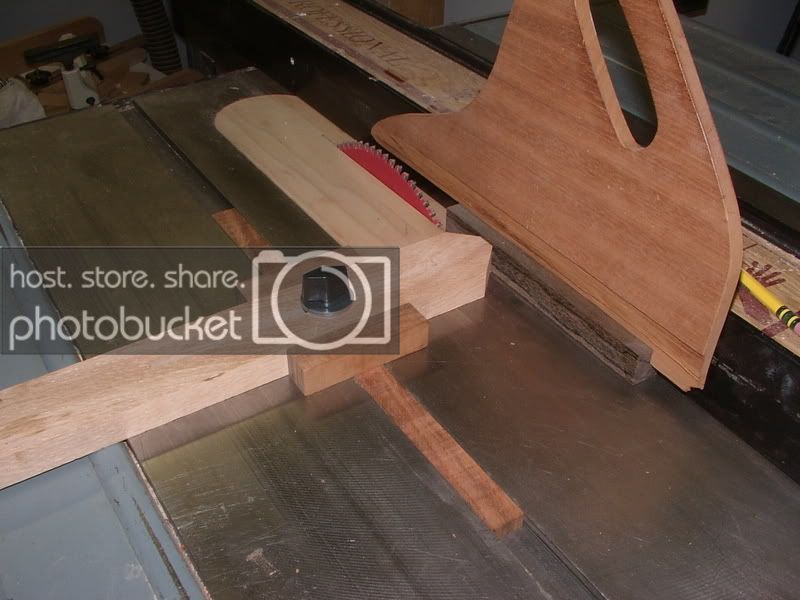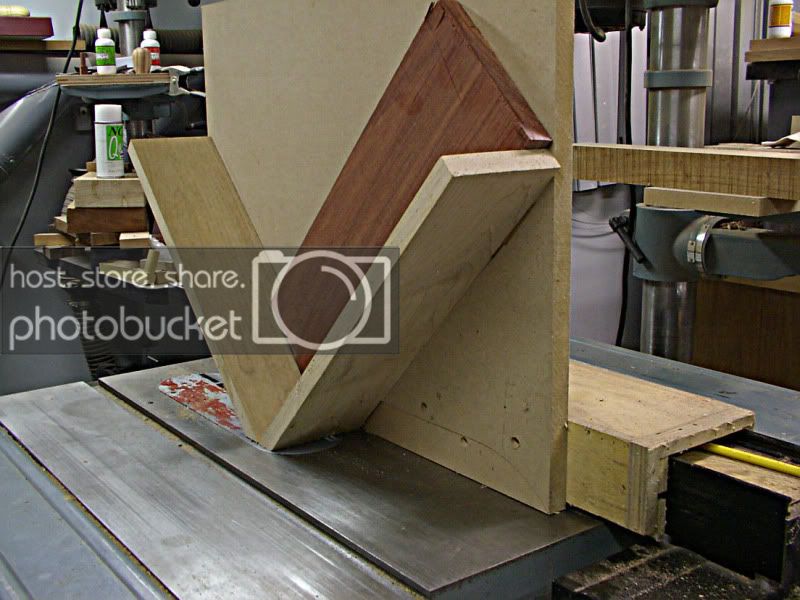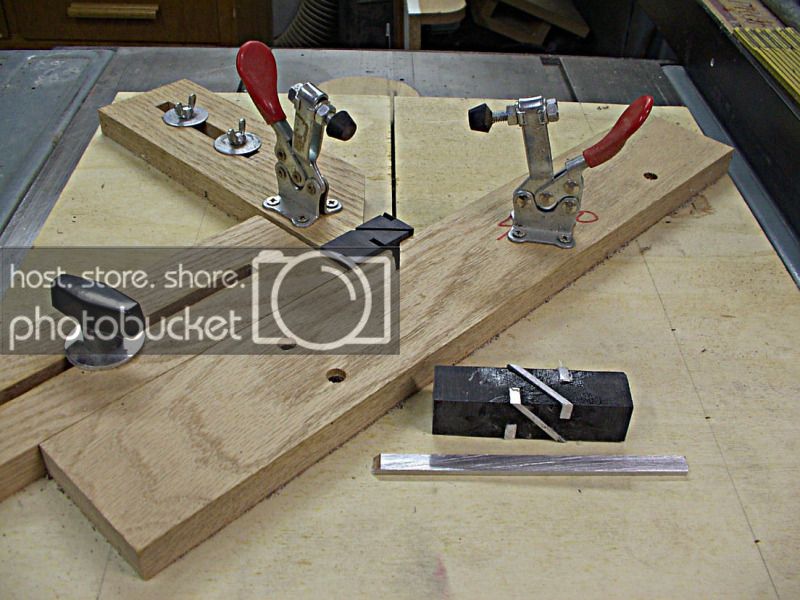mpex
Member
Just finished my first jig last night. For cutting blanks and segments on a table saw. Note that in this photo I have the segments spread out on the jig. That was just for the photo.
Bought a Forrest WW II, Thin kerf 48tooth with stabilizer and a zero clearance insert.
Jig was put together based on this plan:
Pen Blank Table Saw Sled Jig - by LarryDNJR @ LumberJocks.com ~ woodworking community
If anyone has some links to ideas for building these next 3 jigs, it would be much appreciated!!! I think I want to do them all on a table saw.
1.Jig for cutting repeatable angles. You can see how I'm doing it in photo 2, but it is far from ideal in a few ways. Not secure and can slip out of alignment. Not easy to set up and hold the angle.
2.Jig for cutting blanks down the center.
3.Jig for cutting blanks in half from one corner to the opposite corner at the bottom.
4.Jig for cutting wood on it's edge, oriented as a diamond.
Other question for this jig:
1.On this setup, I am getting kickbacks around every 5-10 cuts. Having the backstop really helps, but I can see how a stray might hit the backstop and ricochet towards me. None are shooting in my direction right now. Some also hit the backstop hard enough to break. On the piece opposite the blank, what about putting a small feather board there? Any other ideas?
Bought a Forrest WW II, Thin kerf 48tooth with stabilizer and a zero clearance insert.
Jig was put together based on this plan:
Pen Blank Table Saw Sled Jig - by LarryDNJR @ LumberJocks.com ~ woodworking community
If anyone has some links to ideas for building these next 3 jigs, it would be much appreciated!!! I think I want to do them all on a table saw.
1.Jig for cutting repeatable angles. You can see how I'm doing it in photo 2, but it is far from ideal in a few ways. Not secure and can slip out of alignment. Not easy to set up and hold the angle.
2.Jig for cutting blanks down the center.
3.Jig for cutting blanks in half from one corner to the opposite corner at the bottom.
4.Jig for cutting wood on it's edge, oriented as a diamond.
Other question for this jig:
1.On this setup, I am getting kickbacks around every 5-10 cuts. Having the backstop really helps, but I can see how a stray might hit the backstop and ricochet towards me. None are shooting in my direction right now. Some also hit the backstop hard enough to break. On the piece opposite the blank, what about putting a small feather board there? Any other ideas?

